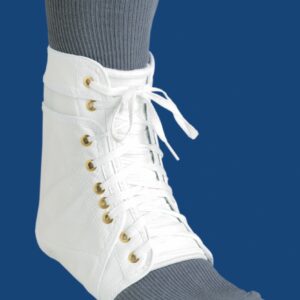Posterior Ankle Impingement
Updated:
(Also known as Ankle Impingement, Posterior Impingement Syndrome, Posterior Impingement of the Ankle, Os Trigonum Syndrome)
What is posterior ankle impingement?
Posterior ankle impingement is a condition characterised by tissue damage at the back of the ankle joint due to compression of these tissues during maximal ankle plantarflexion (figure 2).
The ankle joint primarily comprises of the articulation of two bones, the tibia (shin bone) and a small bone which lies directly beneath it called the talus (figure 1). The surface of each bone is lined with cartilage, cushioning the impact of the tibia on the talus during weight bearing activity.
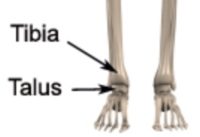
When the foot and ankle are pointed maximally away from the body (plantarflexion – figure 2), the ankle is compressed at the back of the joint. This may result in tissue damage and pain if the compressive forces are too repetitive or forceful (particularly in the presence of ankle swelling or bony anomalies, such as an additional bone, known as an “os trigonum”). This condition is known as posterior ankle impingement.
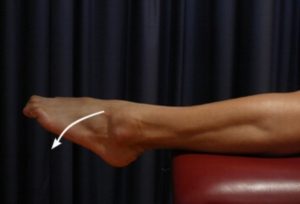
Causes of posterior ankle impingement
Posterior ankle impingement is commonly found in gymnasts, ballet dancers, and footballers, all of whom maximally plantarflex their ankles (figure 2) during their activities. It is also commonly seen in the front landing leg of fast bowlers in cricket.
Posterior ankle impingement often occurs due to inadequate rehabilitation of an acute ankle injury (such as a sprained ankle). Sometimes, patients with anatomical variants in their talus bone (such as an os trigonum) may have an increased likelihood of developing this condition.
Signs and symptoms of posterior ankle impingement
Patients with posterior ankle impingement typically experience pain during activities requiring maximal plantarflexion of the ankle or after these activities with rest (especially at night or first thing in the morning).
Provocative activities may include:
- Swimming (i.e. kicking or pushing off the wall during lap swimming)
- Kicking a ball
- Pointe work (dancing)
- Kneeling
- Walking or running (especially downhills)
- Jumping or hopping
- Activities on ‘tippy-toes’
Symptoms are typically felt at the back of the ankle, or in the Achilles region and may present as a dull ache or a more acute / sharper pain. Symptoms may increase on firmly touching the back of the ankle joint and occasionally may be referred into other regions, such as the calf or foot.
Diagnosis of posterior ankle impingement
A thorough subjective and objective examination from a physiotherapist may be all that is necessary to diagnose posterior ankle impingement. Further investigations such as an X-ray, MRI, CT scan or Ultrasound may assist with diagnosis and help to identify the presence of an os trigonum.
Treatment for posterior ankle impingement

Members Only ContentBecome a PhysioAdvisor Member to gain full access to this exclusive content. For more details see Become a Member. Already a member? Login Now
Contributing factors to the development of posterior ankle impingement
There are several factors which can predispose patients to developing posterior impingement of the ankle. These need to be assessed and corrected with direction from a physiotherapist. Some of the factors which may contribute to the development of this condition include:
- inadequate rehabilitation following a previous ankle injury
- bony anomalies
- joint stiffness
- muscle tightness
- poor foot posture (e.g. “flat feet”)
- inappropriate training technique (especially in dancers)
- inappropriate footwear
- inappropriate training surfaces
- poor lower limb biomechanics
- inappropriate or excessive training
- inadequate recovery periods from training or activity
- inadequate warm up
- poor core stability
- poor proprioception or balance
Physiotherapy for posterior ankle impingement
Physiotherapy treatment is vital to hasten the healing process and ensure an optimal outcome in all patients with this condition. Treatment may comprise:
- soft tissue massage
- electrotherapy (e.g. ultrasound)
- anti-inflammatory advice
- stretches
- joint mobilization
- dry needling
- posterior ankle impingement taping
- ankle bracing
- the use of crutches
- ice or heat treatment
- exercises to improve flexibility, strength and balance
- education
- activity modification advice
- biomechanical correction
- a gradual return to activity program
Other intervention for posterior ankle impingement
Despite appropriate physiotherapy management, some patients with this condition do not improve. When this occurs, the treating physiotherapist can advise on the best course of management. This may include pharmaceutical intervention, corticosteroid injection, further investigations such as an X-ray, CT scan, MRI or Ultrasound or referral to appropriate medical authorities who can advise on any intervention that may be required to improve the condition. For those patients with bony anomalies (i.e “os trigonum”) or prominent bony spurs, surgical intervention may be indicated to remove the bone or bony prominence at the back of the talus. Occasionally, a consultation with a podiatrist may be indicated to correct abnormal foot biomechanics and improve the condition. The treating physiotherapist can advise if this is required.
Exercises for posterior ankle impingement
The following exercises are commonly prescribed to patients with this condition. You should discuss the suitability of these exercises with your physiotherapist prior to beginning them. Generally, they should be performed 1 – 3 times daily and only provided they do not cause or increase symptoms.
Your physiotherapist can advise when it is appropriate to begin the initial exercise and eventually progress to the intermediate, advanced and other exercises. As a general rule, addition of exercises or progression to more advanced exercises should take place provided there is no increase in symptoms.
Initial Exercise
Calf Stretch with Towel
Begin this stretch in long sitting with your leg to be stretched in front of you. Your knee and back should be straight and a towel or rigid band placed around your foot as demonstrated (figure 3). Using your foot, ankle and the towel, bring your toes towards your head as far as you can go without pain and provided you feel no more than a mild to moderate stretch in the back of your calf, Achilles tendon or leg. Hold for 5 seconds and repeat 10 times at a mild to moderate stretch provided the exercise is pain free.
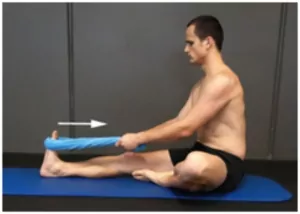
Intermediate Exercises

Members Only ContentBecome a PhysioAdvisor Member to gain full access to this exclusive content. For more details see Become a Member. Already a member? Login Now
Advanced Exercises

Members Only ContentBecome a PhysioAdvisor Member to gain full access to this exclusive content. For more details see Become a Member. Already a member? Login Now
Other Exercises

Members Only ContentBecome a PhysioAdvisor Member to gain full access to this exclusive content. For more details see Become a Member. Already a member? Login Now
Rehabilitation Protocol for posterior ankle impingement

Members Only ContentBecome a PhysioAdvisor Member to gain full access to this exclusive content. For more details see Become a Member. Already a member? Login Now
 Physiotherapy products for posterior ankle impingement
Physiotherapy products for posterior ankle impingement
Some of the most commonly recommended products by physiotherapist for patients with this condition include:
-
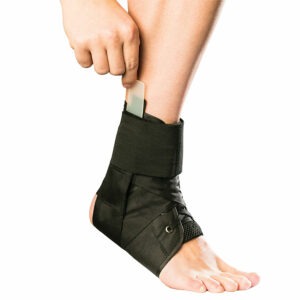 AllCare Ortho Total Ankle Brace (AOA19)
AllCare Ortho Total Ankle Brace (AOA19) -
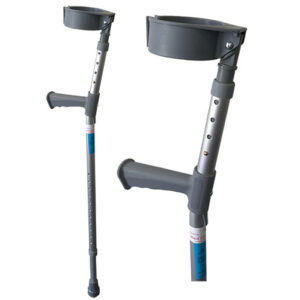 Forearm Crutches Adjustable – Standard Grip
Forearm Crutches Adjustable – Standard Grip -
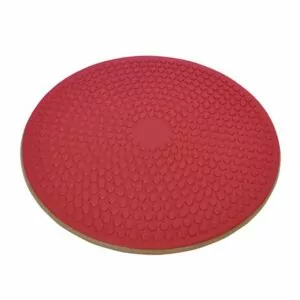 AllCare Wobble Board (Red – ACWOBRD)
AllCare Wobble Board (Red – ACWOBRD) -
 Fitness Ball Pro – Loumet
Fitness Ball Pro – Loumet -
 Premium Strapping Tape 38mm (Victor)
Premium Strapping Tape 38mm (Victor) -
 AllCare Tubing
AllCare Tubing -
 AllCare Spikey Massage Ball
AllCare Spikey Massage Ball -
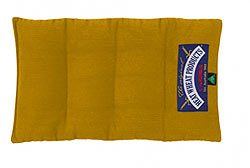 Heat Wheat Handy Pack
Heat Wheat Handy Pack -
 AllCare Instant Cold Pack (15 x 25cm)
AllCare Instant Cold Pack (15 x 25cm) -
 AllCare Foam Roller Round
AllCare Foam Roller Round -
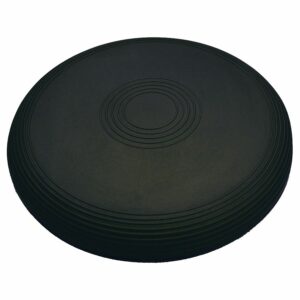 Lournet Stability Dura Disc
Lournet Stability Dura Disc
To purchase physiotherapy products for posterior impingement of the ankle click on one of the above links or visit the PhysioAdvisor Shop.
 Find a Physio
Find a Physio
Find a physiotherapist in your local area who can treat posterior impingement of the ankle.
 More Exercises
More Exercises
- Calf Flexibility Exercises.
- Calf Strengthening Exercises.
- Balance Exercises.
- Leg Stretches.
- Leg Strengthening Exercises.
 More information for posterior ankle impingement
More information for posterior ankle impingement
- How to use Crutches.
- Ice or Heat.
- R.I.C.E. Regime.
- Posterior Ankle Impingement Taping
- Do I Need Orthotics.
- Choosing a Shoe.
- Returning to Sport.
- Returning to Running.
- Why is my Injury not Improving?
- Achilles & Heel Diagnosis Guide.
Become a PhysioAdvisor Member
-
 Individual Membership (12 Months)$59.95 for 1 year
Individual Membership (12 Months)$59.95 for 1 year -
 Individual Membership (3 Months)$39.95 for 3 months
Individual Membership (3 Months)$39.95 for 3 months -
 Individual Membership (Yearly)$49.95 / year
Individual Membership (Yearly)$49.95 / year -
 Individual Membership (Monthly)$15.95 / month
Individual Membership (Monthly)$15.95 / month

Link to this Page
If you would like to link to this article on your website, simply copy the code below and add it to your page:
<a href="https://physioadvisor.com.au/injuries/achilles-heel/posterior-ankle-impingement”>Posterior Ankle Impingement – PhysioAdvisor.com</a><br/>Detailed information on Posterior Ankle Impingement by physiotherapists including causes, symptoms, diagnosis, treatment, rehabilitation protocol and more
Return to the top of Posterior Ankle Impingement.

